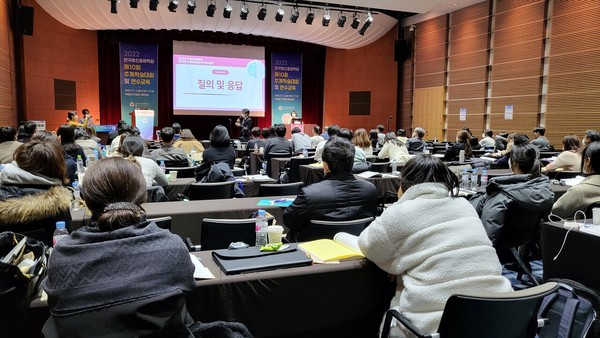The bill on the so-called “doctor-assisted death with dignity” has been proposed, and 70 percent of Koreans reportedly support it.
However, the medical community sees the issue entirely differently.
Doctors point out that the right word is not “doctor-assisted death with dignity” but “doctor-assisted suicide,” and the Korean healthcare system is not ready yet to handle such deaths.
At a workshop organized by Psychooncology Korea on Saturday, experts held a hot debate on the controversy caused by the ongoing moves to amend the “Act on hospice, palliative care, and determining life-sustaining care for patients on dying process.”

“Considering the infrastructure for hospice and palliative care and the level of death education for medical professionals, I do not think the Korean medical community is ready for doctor-assisted suicide,” said Professor Koh Yun-seok of the Internal Medicine Department at Asan Medical Center. “Even medical schools have yet to start education on death. So, allowing doctors to help patients take their lives is like forcing grade school students to solve a calculus problem.”
Professor Moon Jae-yeong of Chungnam National University Hospital also said the medical fields are not ready to accept doctor-assisted suicide. He added that assisted suicide, which contributes to patients’ death, could shake the identity of medical professionals.
“Society wants death with dignity, but our healthcare system cannot even provide care service for terminal students. In the medical field, even communication on patients’ death is not being made properly,” Professor Moon said.
Noting that 70 percent of doctors experience difficulty whenever a patient dies and nurses fall into burnout, Moon said, “As society moves toward doctor-assisted suicide, medical professionals cannot help but agonize over their identity and occupational professionalism. Therefore, Korea should first have prepared social support and system on this matter.”
Some participants expressed concerns that doctor-assisted suicide might reduce infrastructure for palliative care.
Even now, we apply life-sustaining care only to terminal patients. So, it is too hasty to justify suicide to deal with patients’ care and call for the healthcare system to provide that,” said Professor Park Hye-yun of the Neuropsychiatry Department at Seoul National University Hospital.
Noting that if doctor-assisted suicide is introduced, it would highly likely use resources for the current terminal patient care service, Professor Park said, “When the terminal patient care system has not taken root well, the input of workforce and resources in a new system will increase the risk of shaking the palliative care’s infrastructure.”
Others pointed to the problems with the terminology, including “doctor-assisted death with dignity,” arguing that the phrase “death with dignity” hides the acts of “suicide” with the help of physicians. The public opinion that allegedly wants “doctor-assisted death with dignity” also results from this mistake.
“They say 70-80 percent of the public support ‘doctor-assisted death with dignity.’ However, when the Korean Society for Hospice and Palliative Care asked the same question in different expression by using the word ‘doctor-assisted suicide,’ the approval rate stood at only 13 percent,” said Professor Kim Dae-gyun of the Family Medicine Department at Korea Catholic University Incheon St. Mary’s Hospital. “Likewise, when asked what is needed to finish life with dignity, only 15 percent of the public prioritized doctor-assisted suicide.”
Professor Koh also pointed out that the awkward expression “assisted death with dignity” came into being because of the public’s resistance to the word “suicide.” He added that the incorrect expression has led to conceptual confusion.
“Euthanasia means the shortening of life. On the other hand, the stoppage of life-sustaining care is the suspension of medical activity but not euthanasia,” Koh said. “We should not treat the matter as supplementation to the law on determining life-sustaining care. Instead, we should undergo new social discussion and institutional examination as an entirely new concept.”

